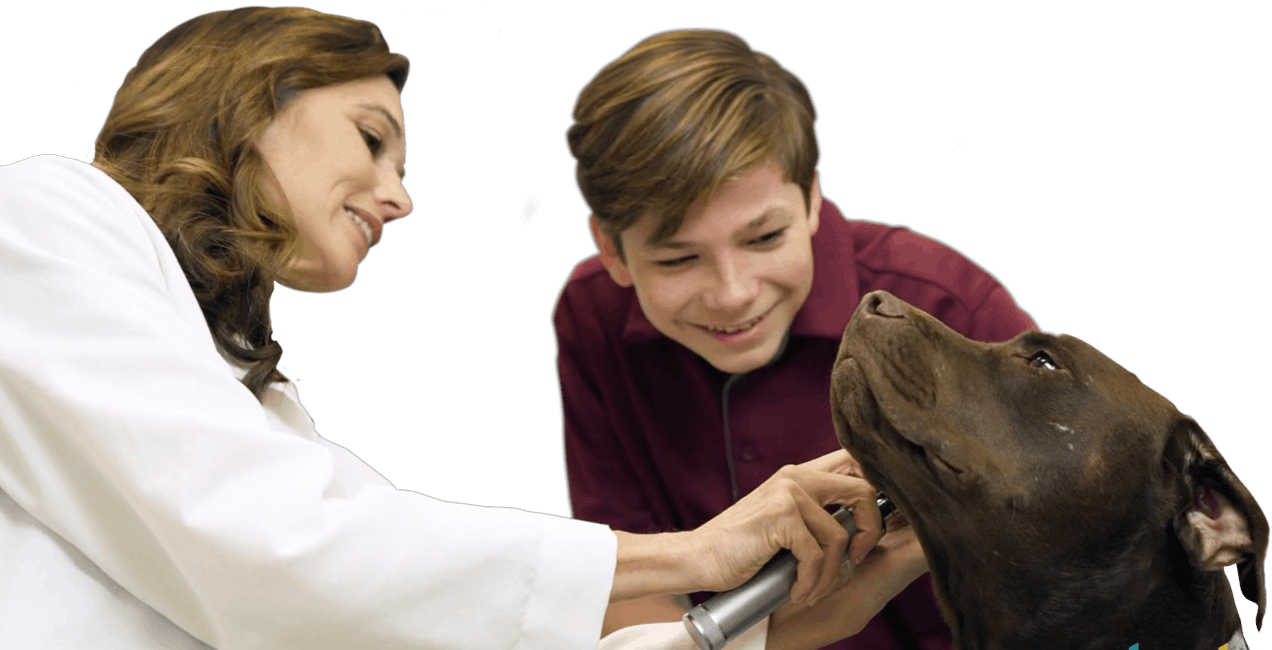WHAT YOU’LL SEE IN THIS VIDEO
In this video you’ll watch Dr. Matthew Chandler, a veterinarian at the Animal Eye Clinic of Jacksonville, Florida take a patient blinded by cataracts and restore his vision.
Bruno, a middle-aged pug, is sent to or “referred” to Dr. Chandler who is a veterinary ophthalmologist (pronounce ophthalmologist). Bruno’s veterinarian sent him to see an eye specialist because Bruno could no longer see. Upon examination, Dr. Chandler notices Bruno’s dense, cloudy, white eyes and diagnosis a cataract.
Before the procedure can begin, Dr. Chandler must first look at the retina or back end of the eye to make sure it is in place and functioning properly. The retina is like the film of the camera. It is a thin layer of tissue at the back of the eye that receives the light information. Dr. Chandler knows that the retina must be in place before he goes forward with surgery.
The procedure is the same one that is often performed in human surgery. Dr. Chandler starts by removing the cloudy portions of Bruno’s lens. He does this using a device called a phacoemulsifier. This device is inserted into the lens through a 3mm or smaller hole and it creates high frequency waves that causes the cloudy portion of the lens to break up into a liquid that can be removed from the eye.
Dr. Chandler next prepares the synthetic, replacement lens for insertion into the eye. He removes it from its packaging and then inserts it into Bruno’s eye as a replacement for the dysfunctional lens.
THE SCIENCE OF VETERINARY MEDICINE
A cataract is a cloudiness or fogging in the lens of a dogs eye. Depending on the extent of the cataract, it can cause blurry vision or prevent the dog from seeing anything. In those advanced cases, the pupil or center part of the eye appears white. This was the way Bruno’s case appeared. There can be many causes of this condition in dogs but most cases are inherited.
FAST FACTS
- Puppies can get cataracts due to improper nutrition
- Cocker spaniels, Poodles, Siberian Huskies, Schnauzers, Old English Sheepdogs, Samoyeds, Golden Retrievers, Labrador Retrievers, Maltese, Boston Terriers and Yorkshire Terriers are more prone to cataracts than other breeds.
- Cataract surgery can often restore normal vision back to a dog
- Although rare, cats can get cataracts.















Comments Add Comment
bellebelle
Good
bellebelle
but......... kinda GROSS!
Izzymarie
I have a horse who has a cataract (or at least that's what it looks like.) He is about 28 years old so he has a few more years left in him. He is very stubborn, grouchy, and lazy, but we love him.
Want to add a comment?
In order to comment you need to login or join Vet Set Go